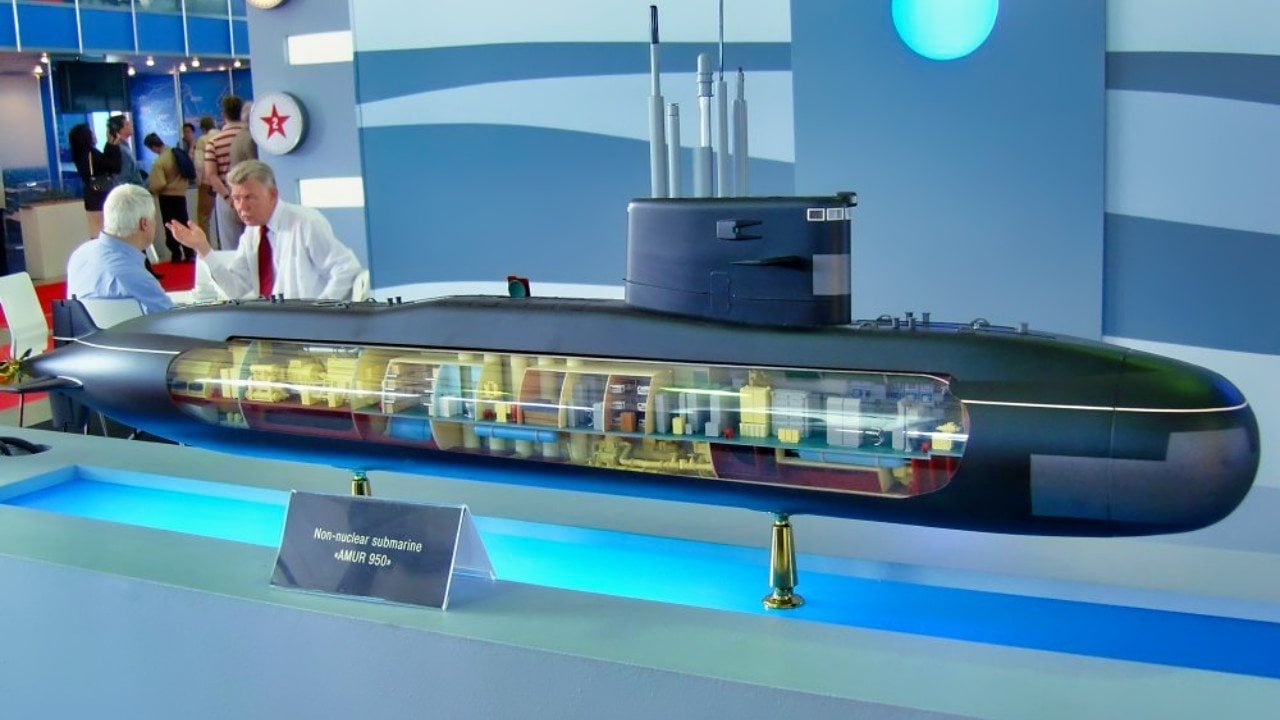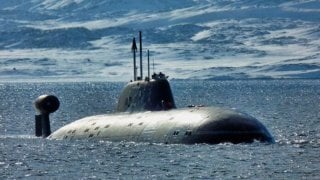The Russian Navy Has Big Plans to Stage a 'Comeback'
Russia's naval capabilities are expanding significantly, with plans to add 12 surface warships and four submarines to its fleet in 2024. Despite international sanctions following its invasion of Ukraine, Russia claims to have achieved complete import substitution in shipbuilding, ensuring self-sufficiency.
Russian Navy Reboot? Russia's naval capabilities are expanding significantly, with plans to add 12 surface warships and four submarines to its fleet in 2024. Despite international sanctions following its invasion of Ukraine, Russia claims to have achieved complete import substitution in shipbuilding, ensuring self-sufficiency.
-The Russian Navy's latest addition, the Lada-class diesel-electric submarine Kronshtadt, recently joined the Northern Fleet, with more submarines expected soon.
-These developments indicate a substantial increase in Russia's naval power, posing a potential concern alongside China's growing naval presence.
Kremlin's Naval Power Surge: What 2024 Holds for Russia's Fleet
The United States has increasingly put a focus on the size of the People's Liberation Army Navy (PLAN), which is now the largest naval force in the world. However, it may not just be China that should be seen as a potential concern.
According to reports from the Kremlin, the Russian Navy will receive 12 surface warships and four submarines in 2024 – while it also claimed to achieved total import substitution in the construction of those vessels. Import substitution industrialization (ISI) is a policy that has been typically enacted by developing countries with the intention to enable domestic development and self-sufficiency through the creation of an internal market. However, Russia faced international sanctions following its unprovoked invasion of Ukraine nearly two years ago.
"We have reached 100-percent import substitution in the construction of ships for the Russian Navy. No sanctions can affect the construction and commissioning of warships today," Russian State Secretary and Deputy Industry and Trade Minister Viktor Yevtukhov told reporters this week, as reported by state media outlet Tass.
For 2024, the Russian Navy could see the largest number of vessels launched in decades, Yevtukhov added, stating that 20 years ago the commissioning of a warship was seen as an "exotic event," while it has become a regular development. The Russian Navy received just 40 surface ships and 24 submarines in the past 10 years, while a decade prior, just three submarines were built.
The pendulum has swung back to the Kremlin's favor.
"The fleet receives a surface warship or a strategic or diesel-electric submarine practically every month," the minister explained. "The good-quality of work of shipbuilders helps observe all deadlines and build the most modern warships in the world."
The Latest Submarine Joined the Fleet
It was on early this year that the Kronshtadt diesel-electric submarine of Lada-class (Project 677) officially joined the Russian Navy during a flag-hoisting ceremony held at the Admiralty Shipyard in St. Petersburg. The Russian Ministry of Defense announced that the submarine joined the Kola flotilla of the Northern fleet.
"It is a gala day for the Navy, as we accept a new-generation submarine based on new physical principles and armed with powerful weapons. The submarine will operate in a brigade of the Northern fleet," Navy Commander-in-Chief Admiral Nikolay Yevmenov said at the ceremony, while adding the newest boat had confirmed its reliability, maneuverability, and stealth features at trials.
The ceremony was also attended by Yevtukhov, Northern fleet Commander Alexander Moiseyev, and representatives of the United Shipbuilding Corporation and the shipyard.

The Kronshtadt will be joined by at least one additional Lada-class submarine in the coming months.
"The Velikie Luki submarine will join the Navy this year," Yevmenov also told reporters. "The shipbuilders promised and keep the word. Trials are ongoing.
All of the Project 677 submarines will operate in the Northern fleet.
Submarines of Project 677 are fourth-generation non-nuclear boats, designated for independent operations against surface warships, and submarines in the assigned area, cruise missile strikes at ground targets and anti-submarine defense of coastal areas. The surface displacement is 1,750 tons, the length is 68 meters, while full underwater speed is 21 knots, and a surface speed of 7 knots. Each is armed with Kalibr missiles and six 533mm torpedoes, and the boats are operated by a crew of 35 officers and sailors.
Author Experience and Expertise: Peter Suciu
Peter Suciu is a Michigan-based writer. He has contributed to more than four dozen magazines, newspapers, and websites with over 3,200 published pieces over a twenty-year career in journalism. He regularly writes about military hardware, firearms history, cybersecurity, politics, and international affairs. Peter is also a Contributing Writer for Forbes and Clearance Jobs. You can follow him on Twitter: @PeterSuciu. You can email the author: [email protected].
All Images are Creative Commons and/or Shutterstock.


